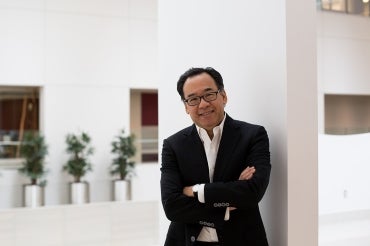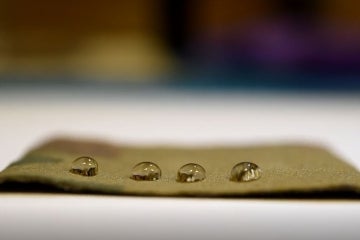Teaching humanism, nurturing empathy: U of T department of medicine's new vice-chair of education

Published: January 27, 2017
Endocrinologist Arno Kumagai quotes Dante’s Inferno, keeps German philosophy in his office book case and sees parallels between medicine and Jewish mysticism.
Conversation with the department of medicine’s new vice-chair of education takes surprising twists – much like his career as a doctor, scientist and educator. He weaves his ideas and experiences together to argue for a more humanistic approach to medicine.
Kumagai, the F.M. Hill Chair in Humanism Education at Women’s College Hospital, moved his family from Michigan to Toronto last year to help instill his approach to medical education at U of T's Faculty of Medicine.
“Fundamentally, medical education is an ethical, moral activity,” says Kumagai, from his book-filled office in Women’s College Hospital. “It’s deeply rooted in the human condition and the concern we have for other human beings.”
At the core of humanistic medicine lies empathy for patients. But Kumagai doesn’t start with the idea that medical schools should teach this quality to learners.
“Students who come into medical school are actually very compassionate and we tend to beat it out of them,” he says with a smile.
About a decade ago at the University of Michigan, Kumagai made the unusual decision to close his research lab to focus on teaching and specifically on helping to develop a more humanistic curriculum that would enhance compassion and the desire for justice.
Inspired by his undergraduate background in comparative literature, he hit on the power of stories and storytelling to promote understanding, an important path to empathy.
Kumagai began by establishing a program to send first-year medical students into the homes of patients to hear their stories about illness and wellness.
“I wanted to allow them to engage in these stories, to use the power of these narratives – use it as a whetstone to sharpen their understanding and their humanism. The idea is to enhance the empathy they came in with,” he says. “We ask students to identify with the needs of society’s most vulnerable. How do you crystalize the identification with someone else, this obligation one has toward the other? One of the greatest purposes of medical education is to make sure Tuskegee never happens again.”
Kumagai’s approach to teaching turned out to be as broad-minded as his reading list. He brought in a theatre troupe to help students understand the impact of receiving a gastric cancer diagnosis. And he worked with students to use creative art to express their understanding of the perspectives and experiences of their patient-volunteers.
Kumagai ran the program for 13 years and published research about his educational innovations. He fell in love with U of T during a visit here, after learning about the Department of Medicine Chair Professor Gillian Hawker and her interest in humanistic medicine.
“Part of humanism is issues of equity. If we are going to treat people as human beings, how do we do that in such a way that we can celebrate and address differences and address injustice and disparities in terms of care?” he asks. “In talking with people at U of T, it was clear these were institutional qualities – part of the structure here.”
Since arriving at U of T, Kumagai has been amazed by the amount of research into medical education and teaching resources exist here.
“Toronto in my mind is the place for medical education in North America if not the world,” he says. “Every medical school has teachers and a core of really passionate ones. Here that’s multiplied exponentially. There’s this incredible critical mass of people who’ve devoted their lives to teaching. You have that combined with world-class centres devoted to medical education, coupled with the diversity of hospitals and Toronto’s [ethnic] diversity. In terms of the possibilities for innovation, this is just unbelievable. I feel like a kid in a candy store here.”
Kumagai never expected to run a lab or teach medicine. After graduating from UC-Berkeley, he got a job in the customer complaints department of a bank. He wanted to do something more impactful. With literature, he had always been interested in the development of the self. In medicine, he saw that doctors were always intimately involved in major life-changing moments.
“The physician’s role is at the point when someone goes from health to illness, from life to death,” he says. “You’re right at that nexus between these huge events. So how can the physician help a person construct that path, find their own way?”
Now as an educator, Kumagai finds great satisfaction in helping students do the same thing.
“I’m seeing people at the beginning of their careers, and they’re trying to figure out which way to go,” whether into clinical practice, education or research. “I’ve been down that path before.”



